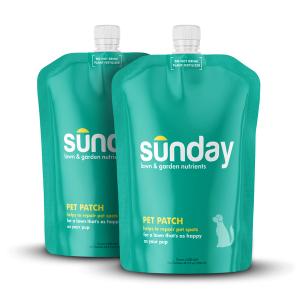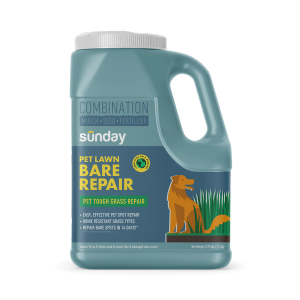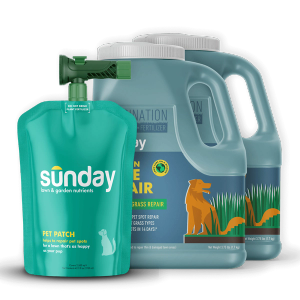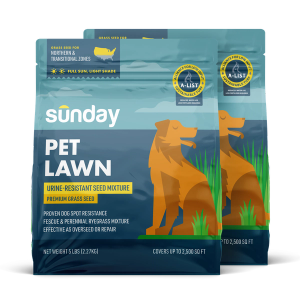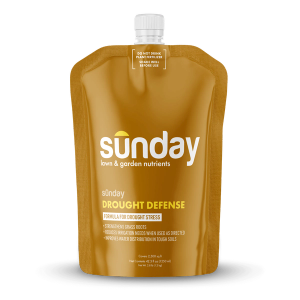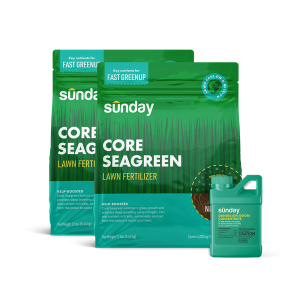Let’s start with the obvious
It doesn’t look good. But aesthetics aside, bare soil can allow moss, algae, and weeds to sneak in and compete with your grass, which is detrimental to the long-term health of your lawn. Plus, exposed soil can lead to sediment pollution in our waterways. Also not great.
Keep reading to learn the causes—and what you can do about it.
Meet the usual suspects
Not enough light
Feelin’ shady? Grass needs at least four hours of sunlight just to survive; to thrive, it needs at least six. Unfortunately, no soil additive can overcome a lack of the sun that grass needs for photosynthesis. Even if your grass has a direct line of sight to the sun, if it competes with tree leaves, the tree will win this one! By the time light passes through the canopy to reach the grass, most of its photosynthesizing power will have been depleted by the tree leaves, and the grass will be spent searching so hard for energy.
Not enough water
In addition to competition for light, your grass will be going head-to-head with thirsty tree roots, and during drier periods there may not be enough water to go around. A telltale sign of this is dry patches along your drip line (if you have one), which indicate that your lawn is experiencing drought stress due to trees taking up all the water.
Not enough space
Are you attempting to plant your grass too close to the tree? It’s common for trees to have shallow roots around the trunk, which makes it difficult for grass to obtain water and nutrients. If grass does manage to get established in this zone, known as the “root flare,” it can actually stunt the tree’s growth—or even kill it.
Not the right soil pH
Another possibility is that your soil is too acidic or too basic. Extremes in pH (less than 4.5 or more than 8.5) can make nutrients either toxic or unavailable to your grass.
Not the right conditions to grow
If you’re confident that your grass is in the right soil, getting plenty of light and water and isn’t too close to the tree, there is one more possible culprit to consider. It's called allelopathy, in which certain plants release inhibitory chemicals that prevent other plants from growing and developing. Black Walnut and Buckthorn are frequent offenders of this territory marking!
Finally, consider that environmental conditions under your tree may not be conducive to good growth: Cooler temperatures, higher humidity, lack of air movement, incorrect moisture levels, and leaf cover in the fall can all prevent your grass from growing well—or at all.
Okay, so how do I fix it?
Start by determining your grass type, which may rule out certain solutions. Not sure what type you have? We made a guide for that!
Diversify your grass
Some cool-season grasses have a degree of tolerance for shade. If your yard has a lot of trees, you may want to consider the following grasses, in order of most shade tolerance to least:
- Fine fescue
- Tall fescue
- Kentucky bluegrass
- Perennial rye
Live in the south? You should probably plant zoysia, the most shade-tolerant warm-season grass species. But remember, even the most shade-tolerant warm-season grass is not as resilient as the least shade-tolerant cool-season grass.
Sunday Tip:
Change up your typical lawn routine under the tree canopy! Raise your mowing height to allow for more grass surface to photosynthesize, apply less than half the rate of fertilizer to limit nitrogen levels, and water or irrigate these zones less to limit moisture influx.
If you want to give this method a go, check out Sunday seeds and choose based on your yard’s sun exposure, water requirements, and tree coverage. You can grow like a pro with our overseeding guide when the time comes.
Prune your trees
Both cool- and warm-season grasses might just need a little more sunlight per day, and in some cases, you can achieve this by cutting branches off your trees. This method will minimize blocking critical sunlight to the grass below the canopy.
Sunday Tip:
Don’t try this at home, folks—at least, not by yourself. Tree pruning is more complex than just cutting off a few branches, and unless you’re skilled at this, it’s best to hire a professional as this method can be labor-intensive, harmful to the tree (if cut improperly), and even dangerous.
Don’t grow grass
Not something you think we’d say, right? Well, if grass just isn’t growing and you don’t want weeds to move in, it’s okay to find alternative solutions.
Non-invasive cultivars like English ivy or common periwinkle can prevent weeds, keep soil in place, and help fill in bare patches with thick, green ground cover. Not worried about a green understory? You can always mulch around trees for an aesthetically pleasing—and less labor-intensive!—solution.
Sunday Tip:
Since your lawn is already stressed and not growing effectively, it’s more susceptible to weeds, diseases, and pests. Monitor for these things and treat as needed.
Ready to give it a go? Our lawn advisors are always on hand to answer any questions. But once your neighbors see your patch-free lawn, you may be the one handing out advice!
Cited sources
Allelopathy. Cornell Science Inquiry Partnerships.
Handbook of Turfgrass Management and Physiology. CRC Press.
The Role of Turfgrasses in Environmental Protection and Their Benefits to Humans. Journal of Environmental Quality.
Soil pH and Tree Species Suitability in the South. Southern Regional Extension Forestry, America’s Longleaf.







